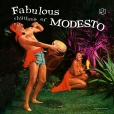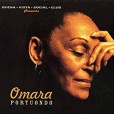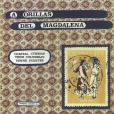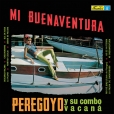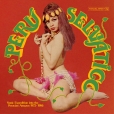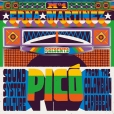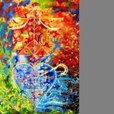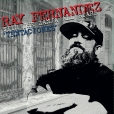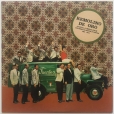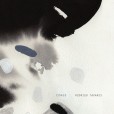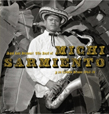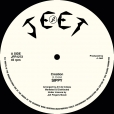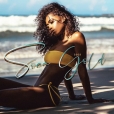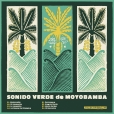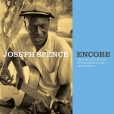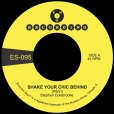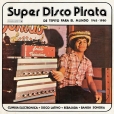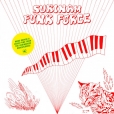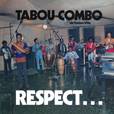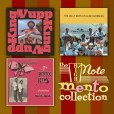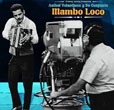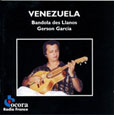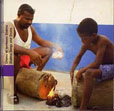Your basket is empty

‘A disciple of mambo innovator Perez Prado, the Cuban-born Modesto Duran was a pivotal figure in Latin dance music’s transitionary mid-century period. His gentle slaps can be heard across dozens of 1950s mega-sellers, from Esquivel to Belafonte, Eartha Kitt to Lena Horne. On his 1960 solo debut, Duran gathers a who’s who of conga-men, including Mongo Santamaría, Willie Bobo, and Juan Cheda, delivering a cinematic and percussive melange of afro-cuban, cha cha, and exotic jazz styles.’
A compilation inspired by the fabulous sound-system, record-collecting culture of the northern cities of Cartagena and Barranquilla, where ricocheting champeta, highlife, soukous, mbaqanga, zouk, soca, and cumbia blare through stacks of hand-painted speakers, in street-corner, neighbourhood bailes.
Vivid, unflinching film of two annual Haitian Vodou pilgrimages — for Ezili Danto, goddess of love, art and passion, and her old man Ogoun, god of war, iron, healing. Ecstatic, bloody, intensely musical.
Tear-up cumbias from this mighty label’s treasure-rooms, handsomely sleeved.
The guitarist’s debut album, inspired by a road trip through Brazil, taking in a Sun City Girls show in a remote former gay club, and a visit to a spiritual healer. He leads upright bass, drums, vibraphone, saxophone and percussion.
‘I decided that I would try to forge, in my own way, from my references, from my universe and from the collective intelligence and sensibility that surrounded me, fundamental melodies, repetitive, minimal, hypnotic rhythmic and harmonic patterns that would be crossed by some sort of improvisation, something that referred to a reality that existed before my individual history, that linked to the life of other places and other times.’
‘unique and beguiling…evocative and profound… music of rare depth’ (The Wire).
‘taps into the common ground between meditative, ambient and trance musics… delightful’
(Chris May, All About Jazz).
Headlong, monster guagancos, descargas and cumbias, with pumping electric bass, Joe Arroyo at the mic, badarse metal percussion, tumbadora and timbales, trumpets, guitar, piano, Michi’s sax and clarinet. Rough!
Funkdafied, discofried, cosmic soca-boogie from 1984. Let’s Get It Together is a monster.
Wonderful, previously-unheard recordings by the legendary Bahamian guitarist, at his peak in 1965, made at his only New York concert, at home in Nassau, and in a Manhattan apartment. Gripping, one-off playing, continuously stepping out of line, or surprising you with accents, like Monk; rough, enraptured singing in the age-old tradition of local sponge fishermen, with startling irruptions of humming, babble and scat.
Bangers drawn from the bootleg compilation LPs — ‘pirata’ — which were all the rage in 1980s Mexico City, The hottest, rarest hits from Peru, Ecuador, Colombia, and beyond — edited, tweaked, EQ-manipulated and pitched-down, to suit the sonideros running the city’s mobile soundsystems.
Seventies and eighties funk, disco and boogie from Surinam — poised between northern South America, the West Indies, and the wider Caribbean — expertly drawn from 45s and LPs.
A Brooklyn-1973 brew of Compas — carnivalesque Haitian party music — and other Carib styles, mixed with funk, soul, psych. Treated guitars, ain’t-no-stoppin’ percussion.
The master accordionist of Colombia’s Musica Tropical movement.
The joropo, pasaje and tonada (with roots in sixteenth-century Spain) played on the bandola, a pear-shaped, four-stringed guitar, made from cedar — with maracas and cuatro accompaniment.
From the Central Coast, afro music for rites and festivals, sharing with salsa drums like the cumaco (using the heel of the hand to vary pitch) and redondo, besides cow horns, car wheels, plates, sea shells.
